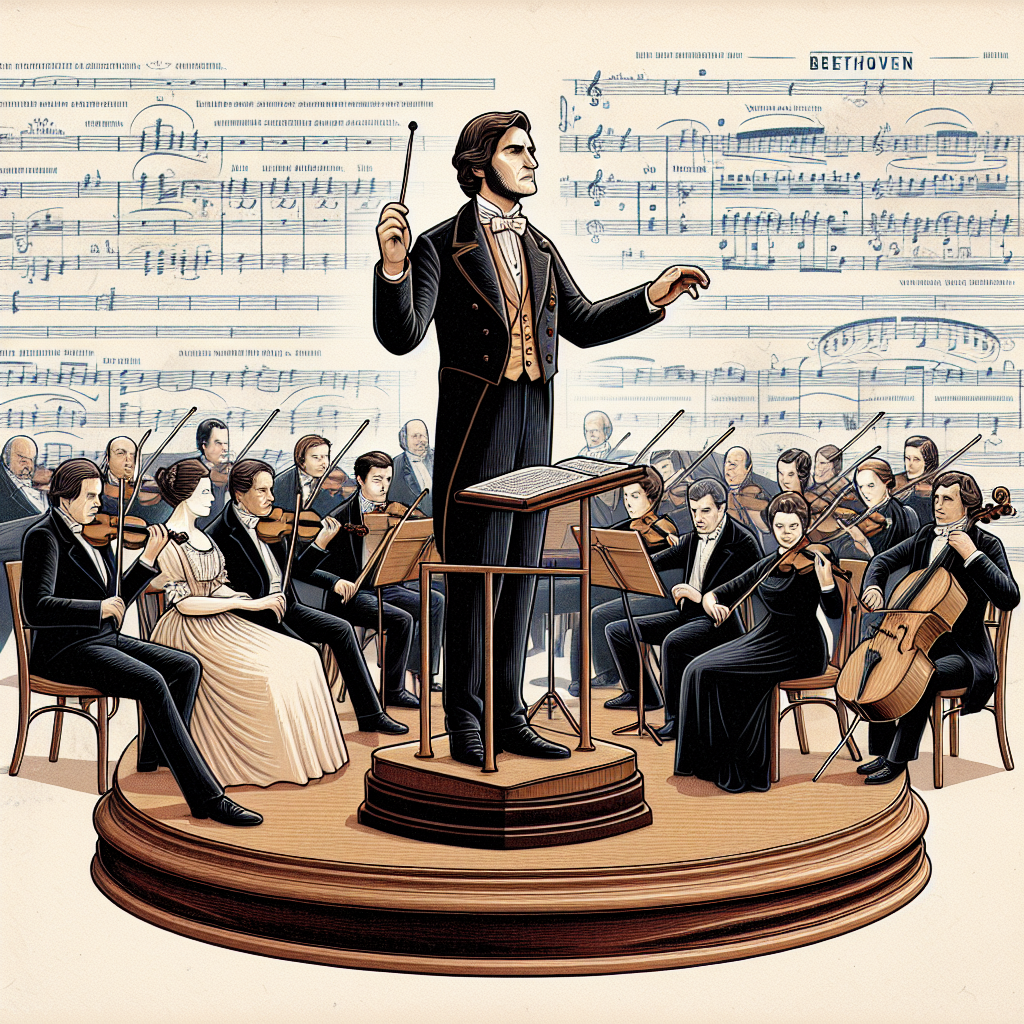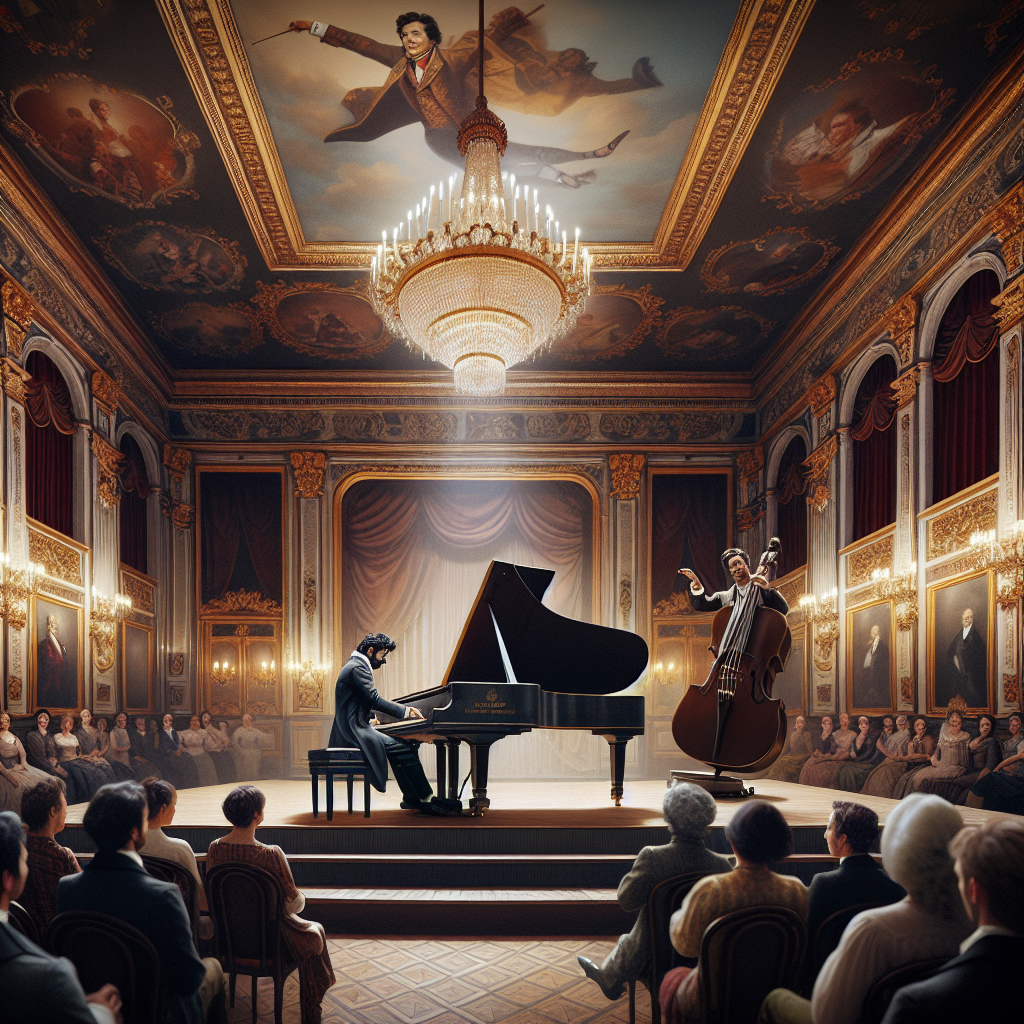
The Viennese Classical Tradition and Beethoven’s Influences
Ludwig van Beethoven, one of the most formidable and innovative composers in the history of Western music, was born in Bonn, Germany, in 1770. His unique compositions bridged the Classical and Romantic periods, making him a pivotal figure in music history. While Beethoven’s genius and impact are universally acknowledged, understanding the influences and contemporaries that shaped his work provides a richer context to his contributions.
When Beethoven moved to Vienna in his early twenties, he entered the epicenter of the Viennese Classical Tradition, a cultural movement led by the likes of Haydn and Mozart. Vienna was teeming with musical discourse, developmental trends, and cutting-edge compositions, all of which profoundly influenced Beethoven. This article will delve into the life and biography of Beethoven while exploring his key influences and contemporaries within this vibrant environment. Moreover, it will paint a picture of how the Viennese Classical Tradition acted as both a lever and a canvas for Beethoven’s creativity.
To fully appreciate Beethoven’s work, it’s crucial to explore the influences he absorbed, the peers with whom he interacted, and how the prevailing cultural milieu of Vienna shaped his revolutionary approach to music. In an authoritative yet conversational tone, this article will traverse through the life, influences, and contemporaries of Beethoven—an immortal cornerstone in the history of classical music.
Early Years and Influences
Ludwig van Beethoven’s early years were marked by a series of crucial influences that laid the groundwork for his future achievements. Born into a musical family, his father Johann van Beethoven, although a restrictive and demanding figure, introduced him to music at a young age. Johann’s intentions were clear: to mold Ludwig into a prodigy akin to Mozart. Despite the sometimes harsh tutelage, this early exposure to music provided Beethoven with a robust foundation.
At a young age, Beethoven studied under Christian Gottlob Neefe, a composer and conductor who introduced him to the works of Johann Sebastian Bach, echoing a profound influence on his contrapuntal style. Neefe’s mentorship was instrumental; he not only nurtured Beethoven’s talent but also encouraged his compositional endeavors. By 1783, Neefe recognized Beethoven’s potential, writing to the Electorate of Cologne that Beethoven would become a second Mozart if he continued progressing.
Further reinforcing his destiny in music, Beethoven sought the mentorship of Joseph Haydn upon moving to Vienna in 1792. Haydn, known as the “Father of the Symphony” and “Father of the String Quartet,” influenced Beethoven through his innovative structures and harmonies. The relationship, however, was complex. While Beethoven respected Haydn, he often felt the need to establish his own identity rather than be seen as an imitator.
The Influence of Haydn
Joseph Haydn, a towering figure in classical music, had a lasting impact on Beethoven. Haydn’s influence is evident in Beethoven’s early works, where the structural forms and sprightly character can be seen as extensions of Haydn’s style. However, Beethoven was not merely a passive recipient of Haydn’s musical dictums. He actively engaged with, and at times, diverged from his mentor’s methods, thus marking his unique trajectory.
Initially, their relationship was mutually respectful. Haydn took Beethoven under his wing and provided him with valuable lessons on composition. Yet, Beethoven’s independent streak led to occasional friction. For example, Beethoven’s Opus 1 piano trios were composed under Haydn’s supervision, but Beethoven’s revolutionary approach surprised Haydn, who suggested revising some sections. Beethoven, however, chose to maintain his original vision—demonstrating his budding confidence and individuality.
Haydn’s major contribution was perhaps in the symphonic and quartet genres. Beethoven’s first two symphonies and string quartets (Op. 18) bear clear marks of Haydn’s influence in their structure and thematic development. Still, Beethoven’s later works reveal a marked departure, characterized by more emotional depth and complexity—a testament to his ambitions to break new ground beyond Haydn’s classical paradigm.

Admiration for Mozart
Wolfgang Amadeus Mozart was another monumental influence on Beethoven, although their personal interactions were limited. Beethoven’s visit to Vienna in 1787, where he reportedly met Mozart, left a significant impression on him. It is popularly recounted that Mozart was startled by Beethoven’s improvisational prowess on the piano, predicting that the young talent would make a significant mark in the future.
Mozart’s operas, concertos, and symphonies set a stellar benchmark for Beethoven. The finesse and emotional sensitivity rendered in Mozart’s compositions served as an inspiration for the young composer who sought to marry technical expertise with profound emotional expression. While Beethoven’s early piano sonatas and chamber music reflect Mozartian elegance, his later works pushed boundaries, often diverging into areas that Mozart’s more formalistic style did not traverse.
Despite the short-lived potential for a full-fledged tutelage under Mozart, Beethoven’s admiration for him remained unflagging. This admiration permeates Beethoven’s music, seen in his attempts to continue the traditions Mozart espoused while simultaneously challenging and expanding them. The grandeur and drama in Beethoven’s symphonies, particularly in works like the “Eroica,” echo the profound influence of Mozart’s harmonic richness and structural innovativeness.
Interaction with Contemporaries
Beethoven’s contemporaries in Vienna included an array of distinguished composers, performers, and intellectuals who stimulated his musical journey. Composers such as Antonio Salieri, Carl Czerny, and Johann Nepomuk Hummel were not mere bystanders but active participants in the vibrant musical culture of Vienna.
Salieri, widely recognized for his operatic compositions, had a functional albeit less intimate connection with Beethoven. Salieri’s expertise in vocal music and opera provided Beethoven with an orthogonal influence. Although more renowned for his instrumental music, Beethoven ventured into operatic territories with works like “Fidelio,” where the influence of Salieri’s operatic techniques can be discerned.
Carl Czerny, perhaps best known today for his piano etudes, was a direct pupil of Beethoven. Czerny’s piano teaching methodologies and interpretations of Beethoven’s works provided insights into Beethoven’s expectations from performers. His legacy as a transmitter of Beethoven’s pianistic ethos to subsequent generations can not be understated.
Beethoven’s Legacy in the Classical Tradition
Beethoven’s legacy in the classical tradition is unparalleled. His tenure in Vienna not only allowed him to interact with contemporaries but also to deeply influence the future of music. The classical structures he adopted from Haydn and Mozart became the canvases on which he painted his emotional and innovative musical ideas.
The ‘middle period’ of Beethoven’s compositions, often referred to as his ‘heroic’ phase, exemplifies how he synthesized influences into his distinctive voice. Works like his Third Symphony (Eroica), Fifth Symphony, and Razumovsky string quartets pushed the boundaries of the classical form. These compositions are characterized by unprecedented emotional depth, thematic development, and structural complexity.
Beethoven’s late works, including his Ninth Symphony, Missa Solemnis, and last string quartets, reveal an even higher level of abstraction and innovation. These compositions paved the way for the Romantic era, influencing composers such as Schubert, Mendelssohn, and Brahms, who went on to carry elements of Beethoven’s style into their own works. His impact on music theory, performance practice, and the creative ambitions of subsequent composers remains indelible.
Conclusion
Ludwig van Beethoven stands as a colossus in the annals of Western classical music, his contributions transcending the limitations of his time to leave an everlasting mark. The compelling influences of Haydn and Mozart, coupled with the vibrant musical culture of Vienna and interactions with contemporaries, shaped Beethoven’s unique artistic journey. His life’s work reflects a confluence of tradition and innovation, pushing the boundaries of classical music while laying foundations for future generations.
As we explore the travails and triumphs of Beethoven, we discover a man profoundly committed to his art, despite personal challenges and societal expectations. His perseverance and fervent pursuit of musical excellence underscore the essence of the Viennese Classical Tradition, which, through Beethoven’s eyes and ears, evolved into a new expressive reality.
Understanding Beethoven in the context of his influences and contemporaries enriches our appreciation of his music. The dynamics of his relationships, his respect yet defiance of traditions, and the formidable intellect that allowed him to innovate set him apart. As listeners, performers, and scholars, revisiting the life and legacy of Beethoven within the rich tapestry of Viennese classical tradition offers an invaluable perspective on the universality and timelessness of his genius.